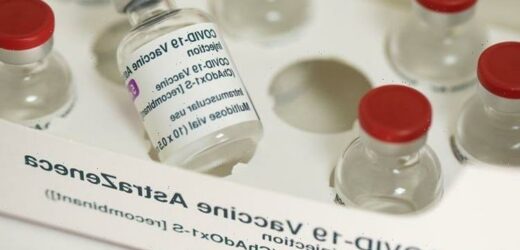Nadhim Zahawi on why the AstraZeneca isn't used for boosters
We use your sign-up to provide content in ways you’ve consented to and to improve our understanding of you. This may include adverts from us and 3rd parties based on our understanding. You can unsubscribe at any time. More info
A study found that the combination produces far higher levels of neutralising antibodies and T-cells, which could be vital for developing countries that have not yet carried out primary vaccination campaigns. It could mean that the ultra-cold storage facilities that mRNA vaccines require to trigger a strong vaccine response may no longer be needed.
One dose of the AstraZeneca vaccine followed by a dose of the Novavax, which can both be stored in a standard refrigerator, produced the strongest T-cell response.
The Com-Cov study was led by a team from the University of Oxford to find out whether mixing and matching Covid vaccines during primary immunisation schedules would result in positive or negative impacts on the immune response.
This could also prove important for developing countries if their vaccine supply is inconsistent because of the flexibility it will allow, according to the study.
Professor Matthew Snape at the University of Oxford, who led the research, said: “What we’re seeing is that there’s a great amount of flexibility in the primary immunisation schedule.
“Just because you’ve received dose one of a particular vaccine, doesn’t mean you have to receive the same vaccine for dose two.”


But the findings could also prove crucial in the UK, as it suggests that using the Moderna vaccine as a booster dose in people who have already had two AstraZeneca jabs should result in high levels of neutralising antibodies and T-cells.
This comes after data published last week from a separate study suggested that both the Pfizer and Moderna jabs can significantly ramp up the strength of the body’s immune defences.
The 1,070 participants received a first dose of the AstraZeneca or Pfizer vaccine.
Nine weeks later, they were given a second dose of the same vaccine, or either a Moderna or Novavax shot.
They found that levels of neutralising antibodies were 17 times higher in those who received the Moderna vaccine after the AstraZeneca shot and four times higher in those who received Novavax after AstraZeneca, compared with those who received two doses of the AstraZeneca vaccine.
In those who had the Pfizer jab first, followed by a second dose of the Moderna vaccines jab, results showed there was 1.3 times as many neutralising antibodies than with two doses of Pfizer.

Those who had Novavax as the second jab resulted in 20 percent fewer antibodies.
The study, published in the Lancet, also showed differences in T-cell responses after combinations of different vaccine types.
Vaccines that use mRNA technology, like Pfizer and Moderna deliver a piece of genetic code, messenger RNA, to human cells.
It then instructs them to manufacture the coronavirus spike protein themselves.
Viral vector vaccines like AstraZeneca’s jab use a harmless virus to deliver these instructions.
And protein-based vaccines, like the Novavax jab, deliver pre-made fragments of the spike protein alongside an immune-stimulating adjuvant.
While two doses of either the AstraZeneca or Pfizer vaccine produced a similar number of T-cells, combining AstraZeneca with a second dose of Moderna produced 3.5 times more T-cells.
And a second dose of Novavax produced 4.8 times more T-cells.
DON’T MISS
Dogs should be fed ONCE a day [INSIGHT]
Russia could deliver hammer blow to UK economy [REVEAL]
Brian Cox debunks Big Bang theory: Universe ‘existed before’ [REPORT]


Having a Moderna after receiving a first dose of Pfizer resulted in 1.5 times more T-cells, but a second jab of Novavax after Pfizer resulted in fewer T-cells.
Prof Snape said: “It tells us that the RNA and the viral vector vaccines are doing something quite different when it comes to priming for the T-cell response.
“What was a bit more surprising is that we didn’t see that so well with the RNA vaccines – especially when it comes to the T-cell response.
“RNA followed by a protein (Novavax) was slightly underwhelming when it came to the T-cell response.”
The UK’s Medicines and Healthcare products Regulatory Agency and the World Health Organization are now considering whether to authorise the Novavax vaccine over the coming days and weeks.
WHO authorisation would allow the vaccine to be delivered via the Covax initiative.
Dr Richard Hatchett, chief executive of the Coalition for Epidemic Preparedness Innovations, said: “This is extremely encouraging and valuable data on the potential to mix-and-match Covid-19 vaccines in primary immunisation schedules. “
Source: Read Full Article


